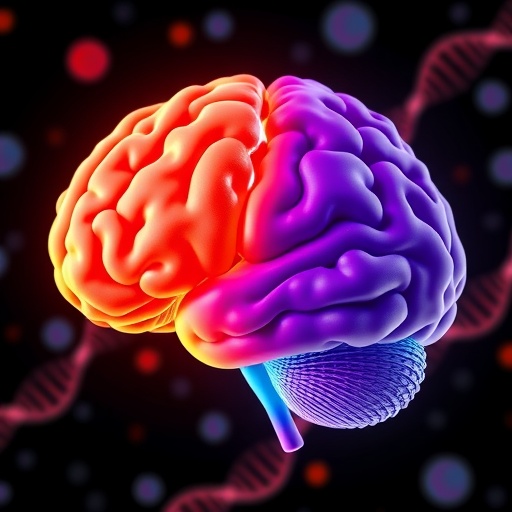New Research Unveils Critical Genetic Link Between Rare Infant Condition and Parkinson’s Disease
Groundbreaking research has revealed that mutations in a gene notorious for causing a severe neurodevelopmental disorder in infants are also intricately connected to the onset of Parkinson’s disease and dementia later in life. This unprecedented discovery bridges the gap between rare pediatric genetic disorders and common adult neurodegenerative diseases, shedding light on shared biological pathways that could revolutionize therapeutic strategies.
The study, recently published in the prestigious journal Annals of Neurology, focused on the gene known as EPG5. Previously identified as the genetic culprit behind Vici syndrome—a rare, inherited disorder marked by profound developmental delay and multi-organ involvement—EPG5 mutations are now shown to have far-reaching consequences extending well beyond infancy. Researchers situated at King’s College London, University College London (UCL), the University of Cologne, and the Max Planck Institute for Biology of Ageing conducted an extensive investigation into the broader implications of these mutations.
Vici syndrome, although ultra-rare, offers a unique window into human neurodevelopment. Characterized by early-onset symptoms including agenesis of the corpus callosum, cardiomyopathy, immunodeficiency, and severe developmental delay, this disorder affects fewer than ten children in the UK. The newfound link between EPG5 mutations and adult neurodegeneration suggests an underlying continuum that has hitherto been unappreciated, implicating a lifelong spectrum of neurological disease originating from a shared cellular defect.
Professor Heinz Jungbluth, a leading child neurologist at King’s College London and the study’s principal investigator, explained that the initial impetus for this research stemmed from observations of increased Parkinson’s disease incidence among relatives of patients with Vici syndrome. By systematically compiling and analyzing clinical and genetic data from 211 individuals globally harboring EPG5 mutations, the team was able to map a range of phenotypic expressions, extending from classical early-onset Vici syndrome cases to adults exhibiting neurodegenerative symptoms traditionally not associated with this gene.
This expansive phenotype spectrum encompassed early developmental delays in motor skills, cognition, and speech, as well as the insidious emergence of Parkinsonian features and dementia in adolescence or adulthood. Importantly, neuroimaging in affected adults revealed aberrant brain iron accumulation, a hallmark previously linked to other neurodevelopmental and neurodegenerative disorders, underscoring a possible shared pathological mechanism.
Central to the cellular pathology elucidated in this study is EPG5’s pivotal role in autophagy—a fundamental catabolic mechanism whereby cells degrade and recycle damaged organelles and proteins to maintain intracellular homeostasis. The protein encoded by EPG5 mediates autophagosome-lysosome fusion, a critical terminal step allowing for the efficient clearance of cellular waste. Mutations disrupting this process cause deleterious accumulation of misfolded and aggregated proteins, notorious for triggering neurodegeneration.
To decode the molecular consequences of EPG5 disruption, researchers harnessed patient-derived cellular models alongside genetically engineered organisms, including mice and Caenorhabditis elegans. Error induction in EPG5 within these systems revealed impaired autophagic flux leading to protein accumulations characteristic of Parkinson’s pathology, such as alpha-synuclein aggregation. These findings solidify a mechanistic bridge implicating defective autophagy as a cause rather than an effect of neurodegenerative cascades.
Professor Jungbluth highlighted the broader significance of these discoveries, stating that their work supports a conceptual continuum wherein aberrant neurodevelopment is intrinsically linked to subsequent neurodegeneration. This paradigm challenges existing notions that consider pediatric neurodevelopmental disorders and adult neurodegenerative diseases as separate entities, promoting a unifying cellular pathomechanism conserved across species.
Complementing this perspective, Dr. Reza Maroofian, co-first author from UCL’s Queen Square Institute of Neurology, emphasized the transformative potential of leveraging insights from exceedingly rare genetic conditions to deepen our understanding of ubiquitous diseases like Parkinson’s. This cross-disciplinary approach underscores how foundational genetic and cellular research in pediatric neurology can illuminate the etiology of age-related neurodegeneration.
Further echoing the need for integrated scientific collaboration, Dr. Manolis Fanto, a genomics expert at King’s College London, underscored the project’s demonstration of synergy between clinical observations and fundamental neuroscience research. By unraveling the complex genetic and mechanistic interconnections spanning a lifetime, such collaborations propel precision medicine initiatives that aim to tailor interventions across the neurodevelopmental to neurodegenerative disease spectrum.
This comprehensive exploration of EPG5’s multifaceted role highlights the significance of autophagic dysfunction as a shared driver in lifelong neurological pathology, opening avenues for innovative treatment paradigms. Targeting the autophagic pathway could potentially ameliorate or delay progression not only in rare disorders like Vici syndrome but also in Parkinson’s disease and related dementias, conditions that collectively impose significant global health burdens.
In sum, this landmark study exemplifies how elucidating the genetic and cellular underpinnings of ultra-rare childhood diseases can yield profound implications for understanding and combating common adult-onset neurodegenerative diseases. It challenges researchers and clinicians alike to adopt an integrated lifespan perspective, fostering breakthroughs that extend hope and tangible benefits to patients and families affected by these devastating conditions.
Subject of Research: Genetic mutations in EPG5 gene linking Vici syndrome and Parkinson’s disease
Article Title: Mutations in EPG5 Gene Establish a Lifespan Continuum from Rare Neurodevelopmental Disorder to Parkinson’s Disease
News Publication Date: Not specified in the original content
Web References: https://onlinelibrary.wiley.com/doi/10.1002/ana.78013
Keywords: Parkinson’s disease, Vici syndrome, EPG5 gene, neurodevelopmental disorders, neurodegenerative diseases, autophagy, genetic mutations, alpha-synuclein, dementia, neuroimaging, brain iron accumulation, cellular homeostasis




